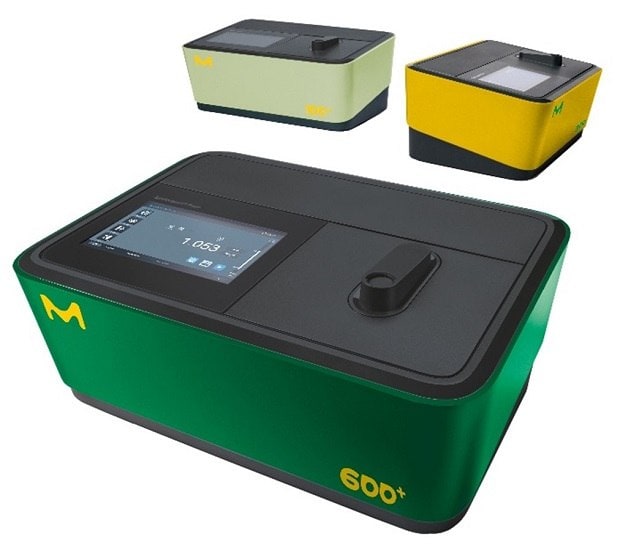Photometric Determination of Phosphate in Manure Using the Phosphorus Molybdenum Blue Method
Abstract
This protocol outlines the photometric determination of phosphate in manure using the phosphorus molybdenum blue method. The procedure uses Spectroquant® test kits and spectrophotometers for precise and reliable results.
Section Overview:

Spectroquant® spectrophotometers - Prove 100 plus, Prove 300 plus, & Prove 600 plus
Introduction
Phosphate is an anion with the formula PO43− or an ester derived from phosphoric acid (H3PO4). Phosphorus, one of the main elemental nutrients required by plants for their healthy growth and development is supplied to them naturally, majorly in the phosphate form. Manure, the decomposed remains of plant and animal waste contains a considerable amount of phosphate, mainly as inorganic orthophosphate. This form of phosphorus is taken by plants for their growth1. When manure amends with soil, the phosphates are absorbed by the soil and they combine with elements like calcium, aluminum, and iron, found in soil. Consequently, phosphorus-build in the soil leads to the phenomenon of Eutrophication, where harmful algal blooms impact water bodies and aquatic life in them2. Therefore, it is important to analyze manure for its concentration of phosphates.
This application note details a relatively inexpensive, phosphorus molybdenum blue method for the determination of phosphate in manure. The described photometric determination of phosphate is based on the formation of the phosphomolybdate complex after an acid extraction.
Reagents, Instruments and Materials
Phosphate Test Kits/Reagents
For the measurement, one of the following Spectroquant® test kits is necessary:
- Spectroquant® Phosphate Cell Test (1.14543)
- Spectroquant® Phosphate Cell Test (1.14729)
- Spectroquant® Phosphate Cell Test (1.00616)
- Spectroquant® Phosphate Test (1.14848)
- Spectroquant® Phosphate Test (1.00798)
Instrument(s) & Devices
For the measurement, one of the following Spectroquant® photometers is necessary:
- Spectroquant® VIS Spectrophotometer Prove 100 Plus (1.73026)
- Spectroquant® UV/VIS Spectrophotometer Prove 300 Plus (1.73027)
- Spectroquant® UV/VIS Spectrophotometer Prove 600 Plus (1.73028)
- Spectroquant® Colorimeter Move 100 (1.73632)
Also, legacy systems
- Spectroquant® Spectrophotometer Prove 100/300/600
- Spectroquant® Photometer NOVA 30/60/60A
Software for Data transfer
- Optional Spectroquant® Prove Connect to LIMS software package (Y.11086) to transfer your data into an existing LIMS system.
Instrument Accessories
- Rectangular cells 10 mm (1.14946) and/or
- Rectangular cells 20 mm (1.14947) and/or
- Rectangular cells 50 mm (1.14944)
Other Reagents and Accessories
- Water for analysis (1.16754)
- Charcoal activated for soil tests
- Membrane filter with 0.45 μm pore diameter
Experimental Procedure
Sample Preparation
- Put 10 mL of the sample into a 1000 mL standard volumetric flask, fill up to volume with water for analysis and mix.
- After the solid parts have settled, take 20 mL of the supernatant solution and, mixed with a spatula-tip full of charcoal activated for soil tests, put it into a 200 mL standard volumetric flask and fill up to volume with water for analysis.
- Before determination filter the charcoal through a folded filter. In case the solution remains cloudy, filter again through a membrane filter.
Analysis
Determine with one of the above-mentioned test kits following the instructions under “Procedure” (no digestion is needed).
Calculation
Phosphate content in mg/kg PO4-P = analysis value in mg/L PO4-P x 1000
See more applications for photometry at Protocols and Application Notes
References
Per continuare a leggere, autenticati o crea un account.
Non hai un Account?